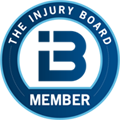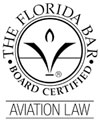Reflex Sympathetic Dystrophy, or Complex Regional Pain Syndrome as it is also known, sometimes results from a physical injury, including a minor injury, after the injury itself is treated and healed. It is an uncurable affliction that results in pain and mobility problems out of proportion to those expected from the initial injury. Some have described RSD/CRPS as the nervous system not knowing that the body has healed. The first and primary complaint occurs in one or more extremities and is described as severe, constant, burning and/or deep aching pain. All tactile stimulation of the skin (e.g. wearing clothing, a light breeze) may be perceived as extremely painful. Repetitive touching of the skin may cause increasing pain with each touch, and the pain may continue after the touching stops. There may be spontaneous sharp jabs of pain in the affected region that seem to come from nowhere. It often spreads to other parts of the body, and can result in a person being bound to a wheelchair, or even worse. RSD/CRPS affects children as well as adults.
The emotional consequences of RSD/CRPS are equally debilitating. The pain is so extreme and so chronic that suicidal thoughts are not uncommon. The families of RSD/CRPS sufferers are not only burdened with caring for a loved one, but there is a feeling of helplessness brought on by the very nature of the disease.
A number of precipitating factors have been associated with RSD / CRPS including:
- Trauma (often minor) ranks as the leading provocative event
- Ischemic heart disease and myocardial infarction
- Cervical spine or spinal cord disorders
- Cerebral lesions
- Infections
- Surgery
- Repetitive motion disorder or cumulative trauma, causing conditions such as carpal tunnel.
However, a definite precipitating event cannot always be identified, and the mechanism by which an injury triggers RSD/CRPS is not understood.
People who develop RSD/CRPS as the result of an injury caused by someone else’s negligence, such as in an automobile crash, often end up in our civil justice system. They may retain legal counsel to make a claim against the person at fault. The person at fault usually has insurance, and the insurer is obligated to defend the claim. It is common for the insurer to accuse the RSD/CRPS victim of lying and faking their condition, especially if the medical record only documents subjective complaints of pain, often unbearable pain. If there are no objective findings consistent with RSD/CRPS documented in the medical record, the insurer will have a field day. After all, the precipitating injury has been treated and has healed, is the defense. To make matters worse, there are physicians who are paid small fortunes by insurance companies to testify in court against people with RSD/CRPS. Typically, they will state it is “mental”, there is no injury, there is no real pain, and the victim is a liar. Unfortunately, many treating physicians are not familiar with RSD/CRPS and their records only document the subjective complaints of pain. If more physicians would educate themselves about RSD/CRPS, they would learn about relatively simple tests to look for objective findings consistent with RSD/CRPS, and they would be helping their patients in more ways than one by documenting those objective findings.
RSD/CRPS research is ongoing, and while there is no known cure, there are several experimental treatments that seem effective in putting the RSD/CRPS in remission, at least temporarily. The best advice for someone with RSD/CRPS is to educate yourself about the disease, and make sure your treating physician has educated himself/herself about the disease. Try not to get discouraged. Progress is being made to understand and treat RSD/CRPS.
Originally posted at The Legal Examiner by Jerry H. Trachtman
 October 15, 2012 in
October 15, 2012 in 


